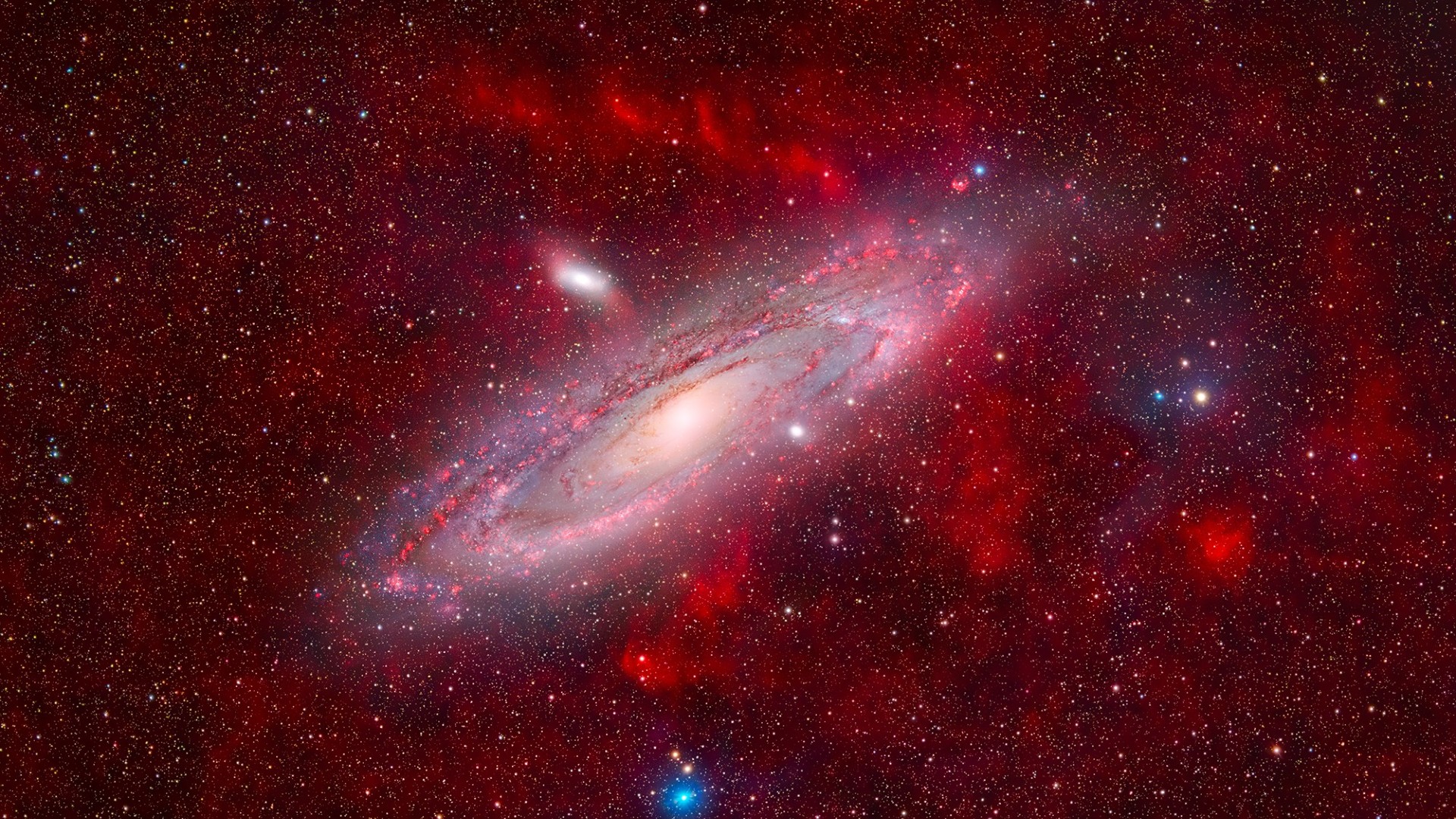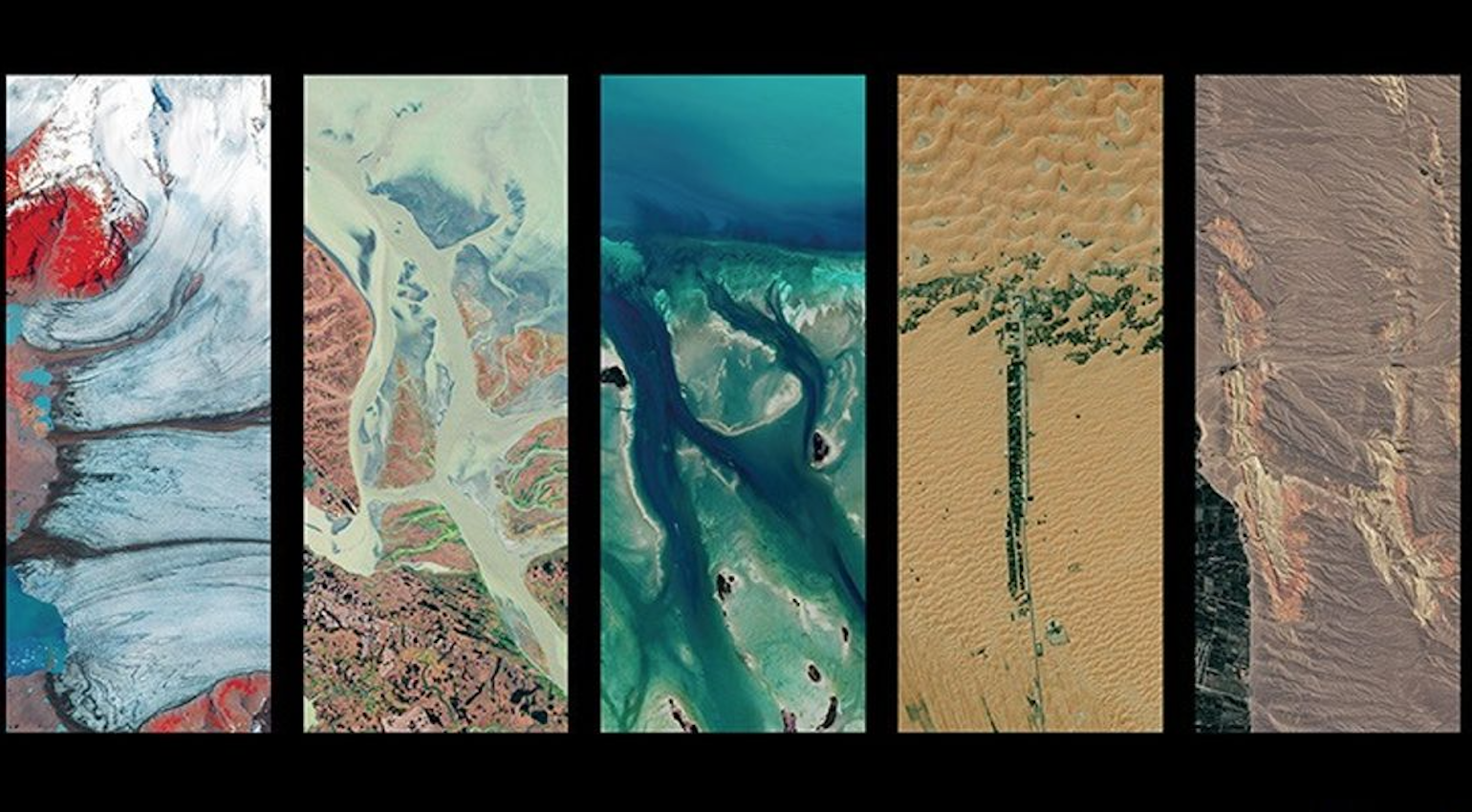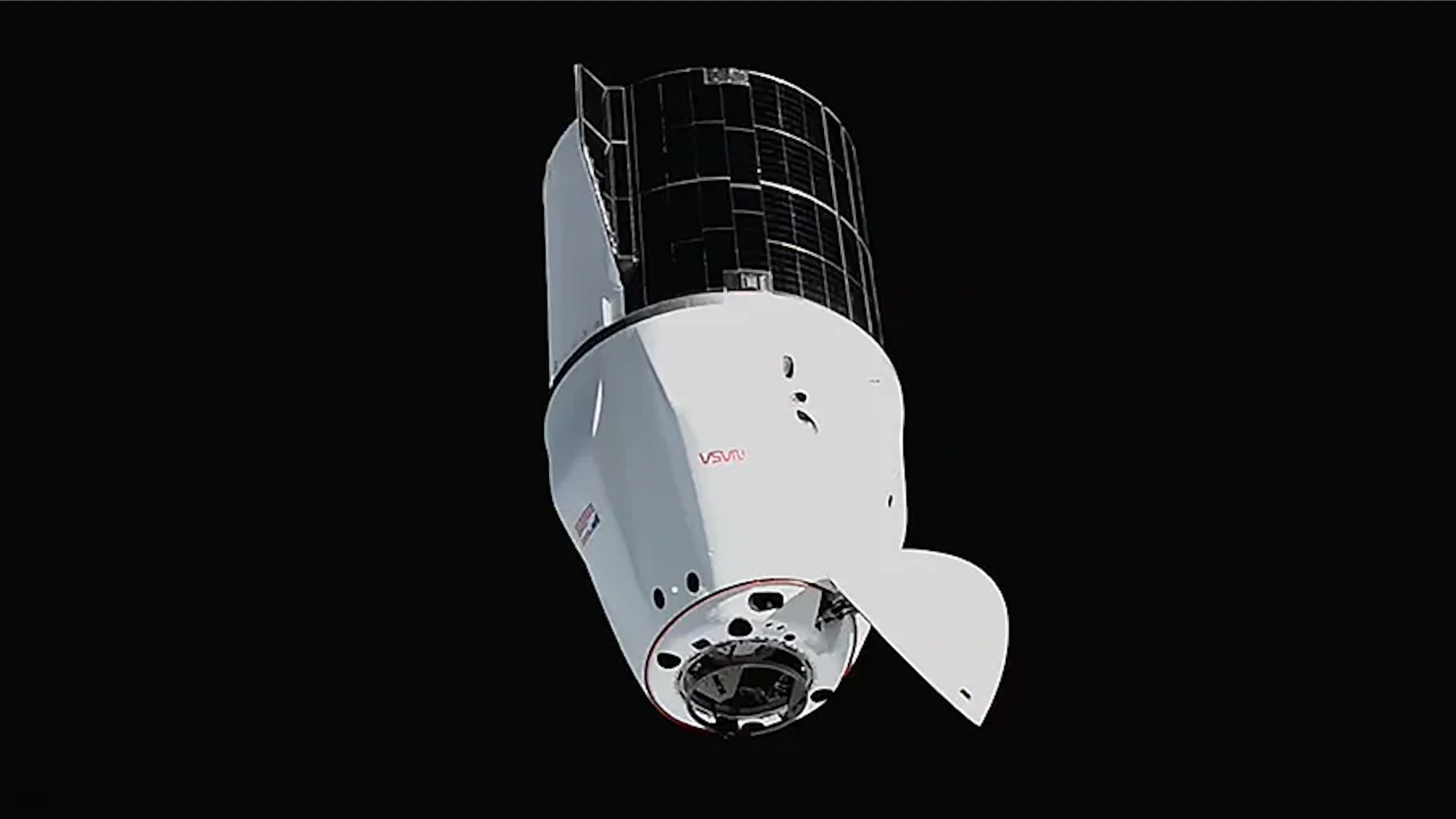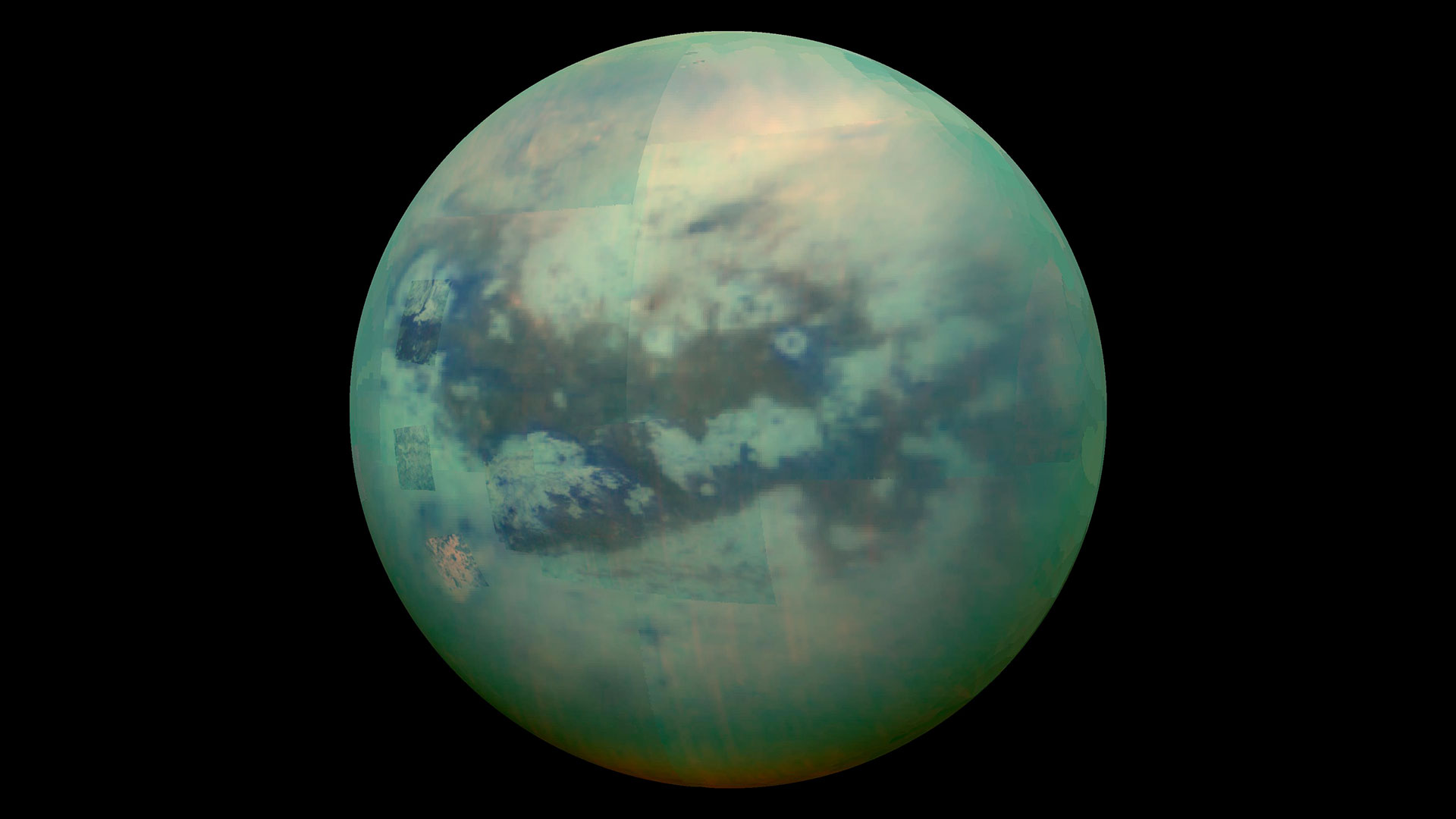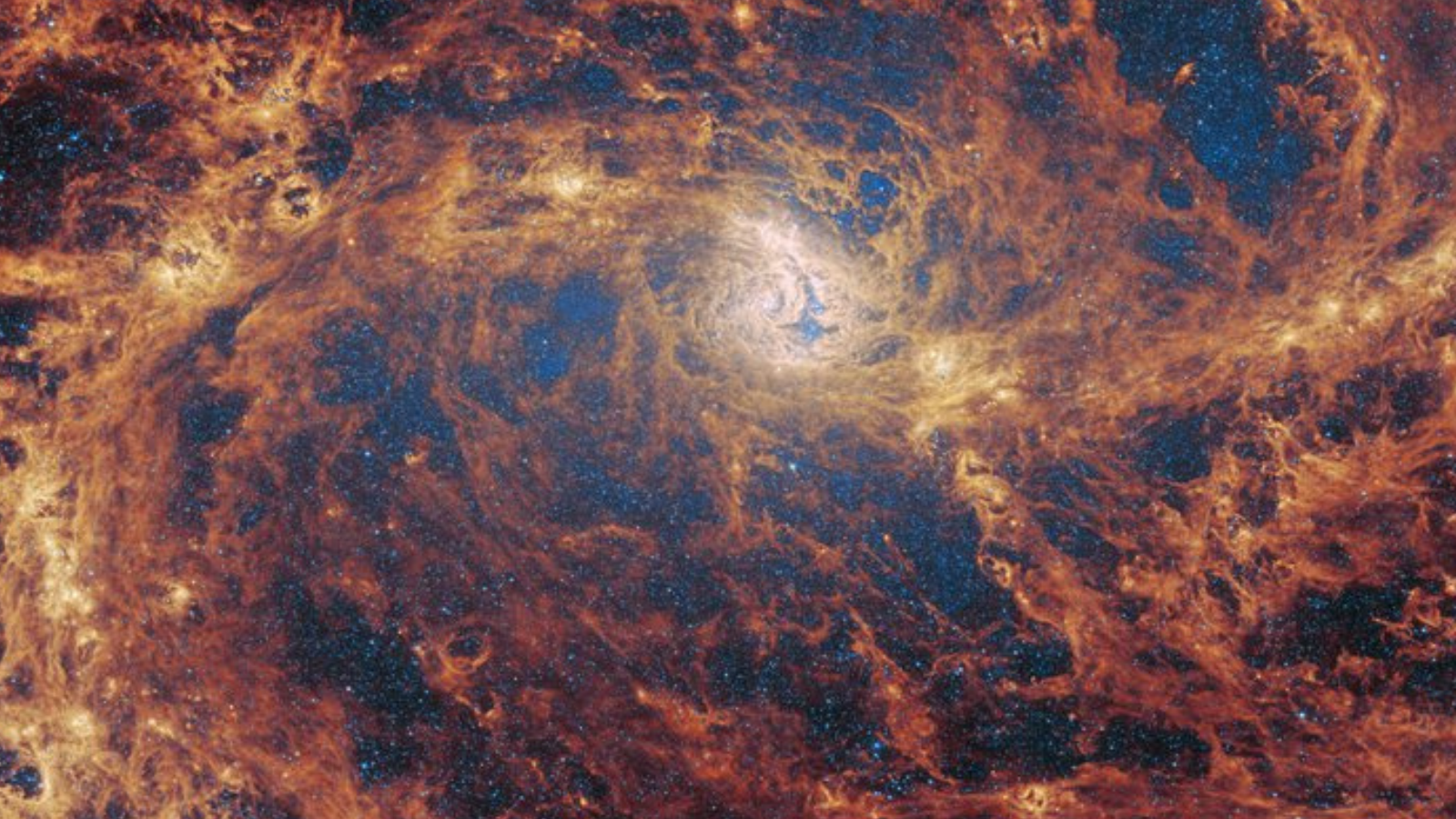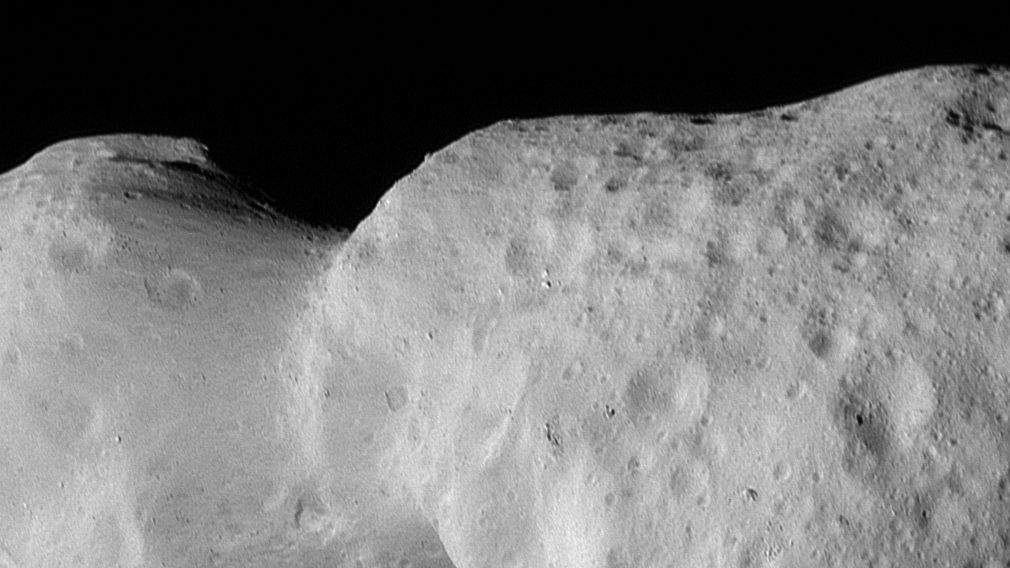Canadian astronaut reveals Indigenous art patch for Artemis 2 moon mission
The insignia reflects Jeremy Hansen's appreciation for Indigenous 'ways of knowing.'
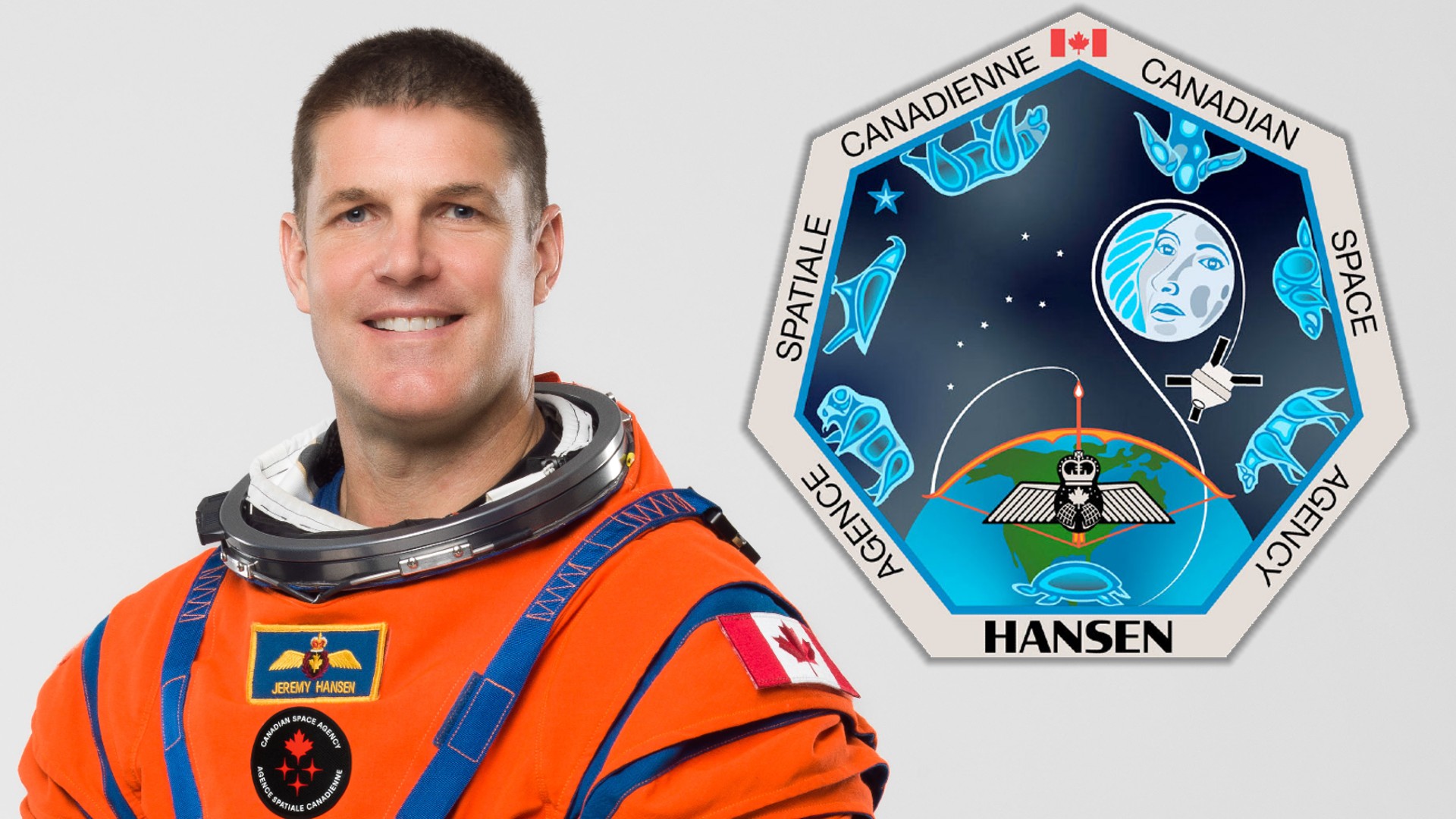
The first Canadian who will fly to the moon now has a patch to represent his own mission, as well as the knowledge passed on by his country's original explorers.
Canadian Space Agency (CSA) astronaut Jeremy Hansen, who in 2025 will fly as a member of NASA's Artemis 2 crew on a flight around the moon, revealed the new emblem while meeting with students from First Nations University of Canada on Thursday (Feb. 8). The insignia reflects Hansen's appreciation for Indigenous "ways of knowing."
"For the past decade, Jeremy has been fortunate to be invited by numerous Indigenous communities to sit with Elders and Knowledge Keepers. They have blessed him with knowledge and teachings that he carries with him as he prepares for his mission," wrote CSA officials, describing Hansen's inspiration for the patch on the agency's website.
The emblem was created at Hansen's request by artist Henry Guimond, a member of the Anishinaabe group of culturally-related Indigenous peoples who live in the Great Lakes region of Canada and the United States. Guimond received guidance from an Anishinaabe Elder, David Courchene III, the leader of the Turtle Lodge in Sagkeeng First Nation (Manitoba).
"While the patch contains elements of Anishinaabe culture that do not reflect all First Nations, Inuit and Métis cultures, working with an Indigenous artist to create the patch he will wear with great humility as he represents our country in space was Jeremy's way to recognize the importance of traditional knowledge and Indigenous Peoples of Canada," the CSA officials wrote.
"This is a big journey going around the moon and I just feel ill prepared as a human to do it and looking for advice," said Hansen in a video accompanying the patch's release. "So [what] is represented here in these Indigenous teachings is a reminder for me on how to walk as I get ready to go on this journey. I am reminded by [this] artwork on how I need to walk to represent humanity."
Central to Guimond's patch design is a bow, which represents Artemis, the twin sister of Apollo, the Greek goddess of the hunt, nature and the moon and the namesake for NASA's first astronaut missions to the moon in more than 50 years.
"She's going to launch her arrow and the astronauts are going to be riding on that arrow, going to the moon," said the artist.
Depicted below the bow is a pair of Royal Canadian Air Force astronaut wings, symbolizing the role that the country's armed forces' has in Canada's journey to the moon and recognizing the sacrifice of Hansen's fellow service members and their families. The Canadian flag at the top of the patch is both a tribute to the thousands of people who have worked across the country to make this mission possible and a means of symbolically bringing all Canadians aboard Artemis 2 as it flies around the moon.
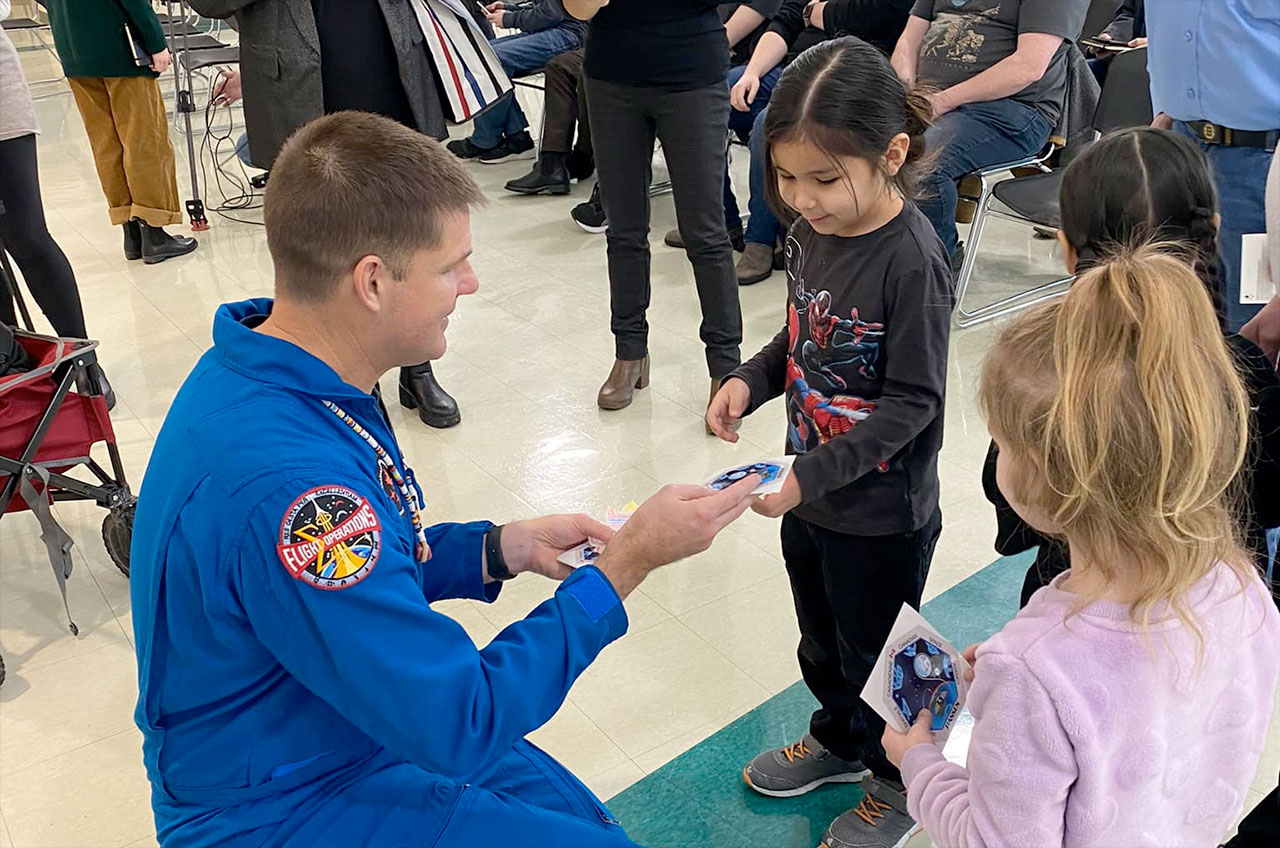
Guimond also included the constellation "The Big Dipper" (Ursa Major) and the "North Star" (Polaris) as reminders that humanity exists amongst an unimaginably expansive universe. Starting with Indigenous peoples, explorers have used these visible stars for navigation and astronauts have navigated by them in deep space. Polaris is depicted as a five-pointed star for the five members of Hansen's family, as well as Texas, where they have been living since Hansen was recruited by the CSA in 2009.
The patch's silver border mimics the silverly-exterior of the Orion capsule that will carry the Artemis 2 crew. Within this border is inscribed "Canadian Space Agency" (in both English and French) and "Hansen."
Bordering the silver is a thin blue line.
"This blue represents all spirits of mankind," said Guimond.

The heptagonal shape of the patch and the seven animals shown within its border are a reference to the Seven Sacred Laws (or Seven Grandfather Teachings). Each animal offers a gift and understanding of how people can live in harmony with one another. The buffalo represents respect; the eagle, love; bear, courage; bigfoot (Sasquatch), honesty; beaver, wisdom; wolf, humanity; and the turtle, truth.
"The reasoning behind the animals and the representation is to keep us connected to our natural environment," said Courchene. "When I listen to our Elders and talk about, as Indigenous people, we have never been given an equal opportunity to contribute or seen as equals within our own homelands. By saying that though, our Elders will say we have yet to give our greatest contribution to the world and part of that, to me, is what we're referring to as the Seven Sacred Laws."
It was not said if Hansen will wear the new patch on his Artemis 2 pressure suit for launch or how it will be seen during the mission. Hansen and his NASA crewmates Reid Wiseman, Victor Glover and Christina Koch have yet to reveal the Artemis 2 mission patch. In March 2023, one month before Hansen was announced as an Artemis 2 crew member, the CSA introduced its new logo, in part to recognize its role in NASA's Artemis program.
Follow collectSPACE.com on Facebook and on Twitter at @collectSPACE. Copyright 2024 collectSPACE.com. All rights reserved.
Get the Space.com Newsletter
Breaking space news, the latest updates on rocket launches, skywatching events and more!
Join our Space Forums to keep talking space on the latest missions, night sky and more! And if you have a news tip, correction or comment, let us know at: community@space.com.

Robert Pearlman is a space historian, journalist and the founder and editor of collectSPACE.com, a daily news publication and community devoted to space history with a particular focus on how and where space exploration intersects with pop culture. Pearlman is also a contributing writer for Space.com and co-author of "Space Stations: The Art, Science, and Reality of Working in Space” published by Smithsonian Books in 2018.In 2009, he was inducted into the U.S. Space Camp Hall of Fame in Huntsville, Alabama. In 2021, he was honored by the American Astronautical Society with the Ordway Award for Sustained Excellence in Spaceflight History. In 2023, the National Space Club Florida Committee recognized Pearlman with the Kolcum News and Communications Award for excellence in telling the space story along the Space Coast and throughout the world.

